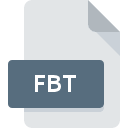.DOK File Extension

DesktopOK Icons Layout File
| Developer | SoftwareOK |
| Popularity | |
| Category | Settings Files |
| Format | .DOK |
| Cross Platform | Update Soon |
What is an DOK file?
The .DOK file extension pertains to DesktopOK Icons Layout files, which are used by the DesktopOK utility to save and manage the arrangement of desktop icons on a Windows computer.
DesktopOK is a popular tool designed to help users save and restore the layout of their desktop icons, making it particularly useful for those who frequently change screen resolutions or work with multiple monitors.
The .DOK file format plays a crucial role in preserving the user’s desktop icon layout, ensuring that their desktop environment remains consistent despite any changes or interruptions.
More Information.
DesktopOK was first released in the early 2010s, with the primary aim of offering a simple solution for users who wanted to maintain their desktop icon arrangement.
Before DesktopOK, users had to manually reposition their icons whenever display settings were changed, which could be time-consuming and frustrating.
The .DOK file format was conceived as a straightforward way to save and restore these layouts, thus enhancing user experience and productivity.
The initial purpose of the .DOK file was to serve as a configuration file for DesktopOK, storing information about the positions of desktop icons, including their coordinates and possibly other metadata.
This allowed users to save multiple layouts and switch between them as needed, facilitating a more organized and efficient workflow.
Origin Of This File.
The .DOK file extension is specific to the DesktopOK application, which was developed by a German software developer named Nenad Hrg.
DesktopOK was created as a lightweight, portable utility to address a common issue faced by Windows users: The rearrangement of desktop icons when changing display settings or connecting to different monitors.
The .DOK file format was introduced as a means to store and manage these icon layouts effectively.
File Structure Technical Specification.
A .DOK file is essentially a configuration file in a binary or text format that contains data about the positions of desktop icons.
The file structure is designed to be both compact and efficient, storing information in a way that is easily read and written by the DesktopOK application.
Technical Specifications:
- Format: .DOK files are generally binary, though they might use a text-based format depending on the version of DesktopOK and user settings.
- Content: The file includes data such as icon coordinates (x and y positions), screen resolution, and possibly metadata about the desktop environment.
- Compatibility: .DOK files are specifically designed to be compatible with the DesktopOK application, and their structure may vary slightly depending on the version of the software used.
How to Convert the File?
Converting a .DOK file to another format is generally not necessary or recommended, as its primary function is to serve as a configuration file for DesktopOK.
If you need to transfer or backup your desktop icon layouts, you can simply copy the .DOK files along with the DesktopOK application to another system.
If you need to use the information in a .DOK file for other purposes, you would likely need to write a custom script or program to parse the file and extract the relevant data. This might require knowledge of the file’s internal structure and the ability to work with binary or text data.
Advantages And Disadvantages.
Advantages:
- Convenience: .DOK files allow users to save and restore their desktop icon layout easily, which is especially useful after changing screen resolutions or connecting to different monitors.
- Multiple Layouts: DesktopOK supports multiple layouts, enabling users to switch between different icon arrangements based on their needs.
- Portability: DesktopOK is a portable application, and .DOK files can be easily transferred between computers, allowing users to maintain consistent desktop arrangements across different machines.
Disadvantages:
- Compatibility: .DOK files are only usable with the DesktopOK application, limiting their functionality to users who have this specific tool.
- Limited Use: The file format is specialized and may not have widespread use beyond the context of desktop icon management, making it less relevant for other applications or purposes.
- Potential Corruption: Like any file, .DOK files can become corrupted, which might result in loss of desktop layout information.
How to Open DOK?
Open In Windows
- Using DesktopOK: The most straightforward method for opening .DOK files is to use DesktopOK. Install DesktopOK on your Windows system, then open the application and load the .DOK file to view or restore the desktop icon layout.
- Direct Opening: .DOK files are specifically designed for DesktopOK, so they cannot be opened natively by other applications or tools.
Open In Linux
- No Native Support: Similar to Mac OS, Linux does not have native support for .DOK files. Users will need to use Windows-based tools like DesktopOK within a virtual machine or use alternative desktop management solutions available for Linux.
- Virtualization Options: Running a Windows virtual machine on Linux can enable users to use DesktopOK and manage .DOK files, although this approach may require additional setup and configuration.
Open In MAC
- Limited Support: Since DesktopOK is a Windows-based application, .DOK files cannot be directly opened or utilized on Mac OS. Users looking for similar functionality on Mac can explore alternative desktop management tools available for the platform.
- Cross-Platform Solutions: If you need to transfer icon layouts between Windows and Mac, consider using cross-platform software or manually recreating layouts based on information from the .DOK file.












